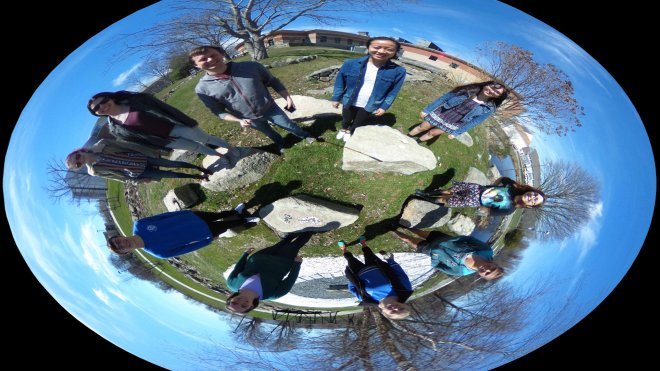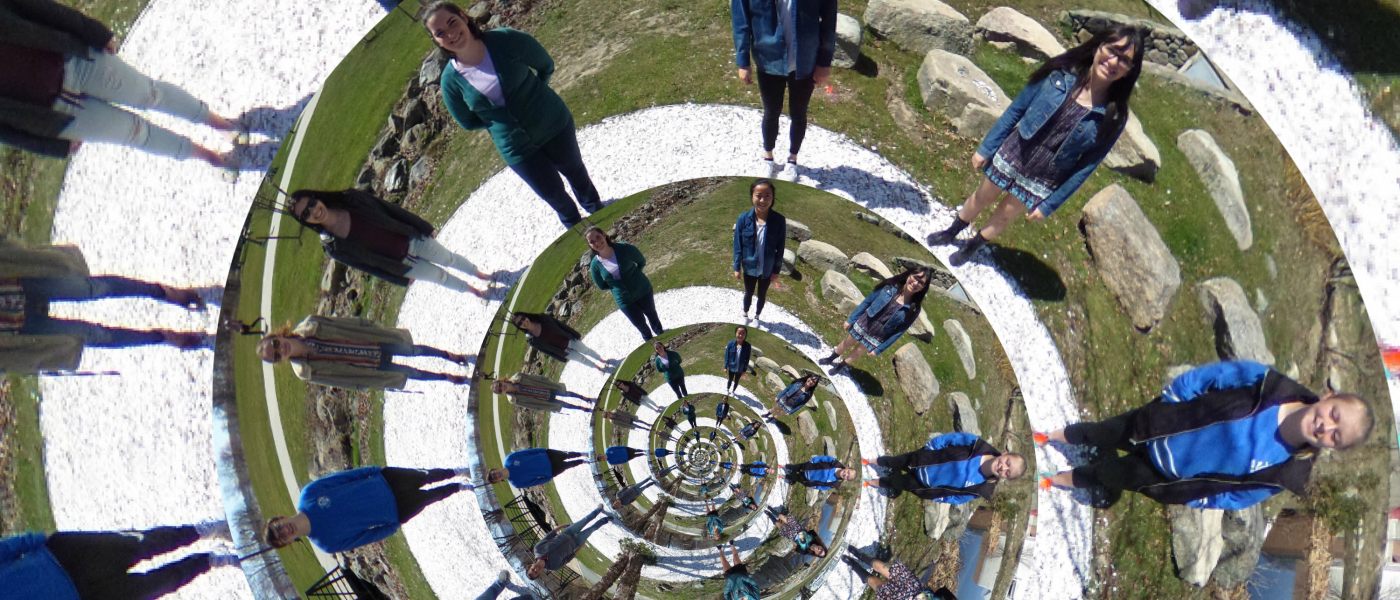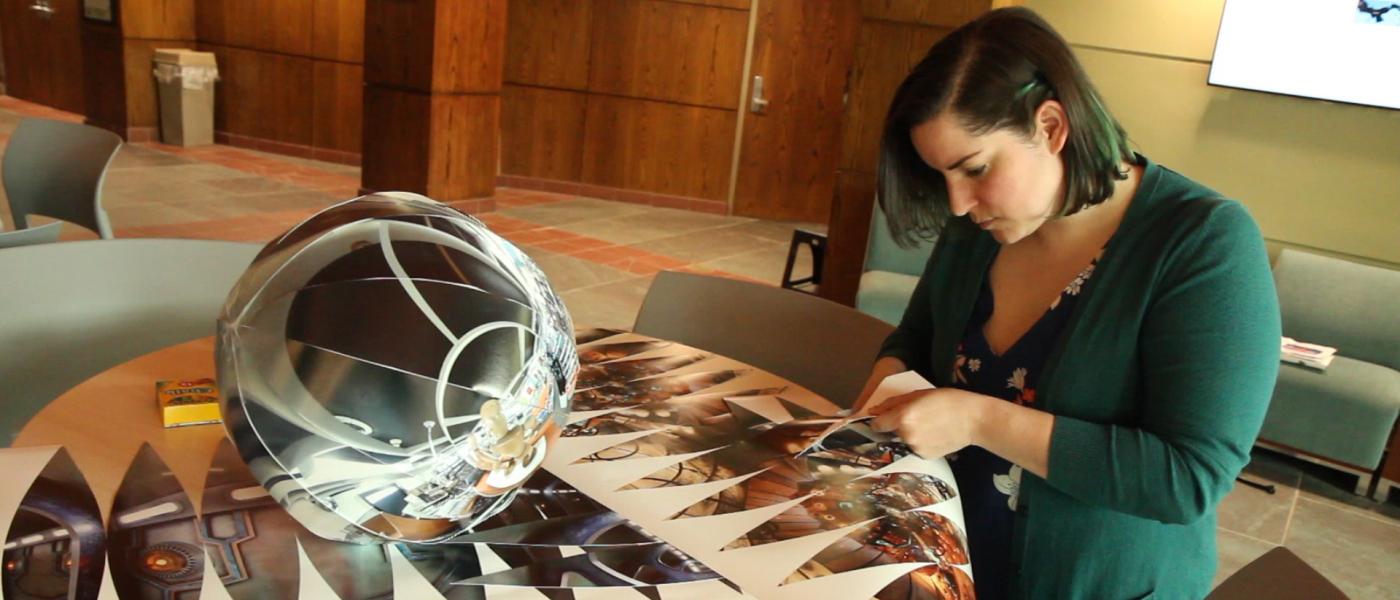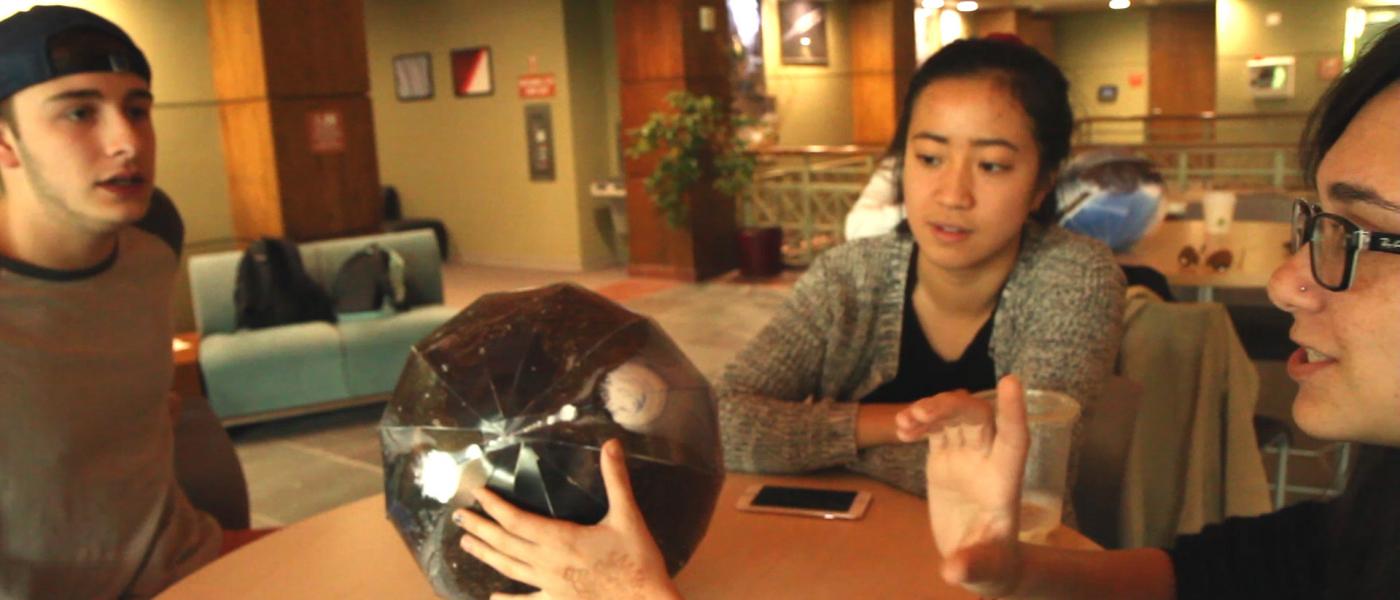Understanding Artistic Mathematics
Students take complex math functions and map them using 360-degree photos

BRISTOL, RI - In Professor Robert Jacobson’s Complex Analysis course, students have found a new application of math beyond what you’ll remember from grade school. Using a 360-degree camera and a set of mathematical functions, Jacobson’s class has blurred the line between math and art, creating a photography project connecting the two and attracting curiosity of the numbers behind the visuals.
By exploring different math functions (sine, cosine, tangent and more), students discover how certain elements affect their photos. “In the original photo, the code assigns pixels to points on that coordinate plane,” says Alexandra Halligan ’17 pointing to the original photo. “When you apply an equation to it, it uses those points and reorients them somewhere else in the photo. So now that pixel is going somewhere else, changing the photo. The pixels are being rearranged as points on a that coordinate plane, creating a new image as a result of each math equation.”

While a majority of the class were math majors, the photos and spherical models they created drew interest from students all across campus, sparking discussion. “This math class has been unlike any math class I’ve ever had. This class had us thinking about using math from a different perspective to understand how it affects the world around us,” says Ashley Crane ’17.

As the students continued to manipulate the photos, they noticed trends of how each equation affected an image. “Rather than it being an abstract concept of points going to infinity, we create models that demonstrate that function,” says Bella Grafstein ’19.
“This is the first time in a math class that I’ve been pushed to create a visual model of something we’re learning,” says Hien Ngo ’18.

"A typical undergraduate course explores the properties of functions on complex coordinate plane and might only mention the plane-sphere equivalence in passing,” says Jacobson. “However, spherical photos and a "chalkboard globe" make a great deal of the theory of these functions much easier to understand.”
Hear more from Professor Jacobson in a video he created, below: